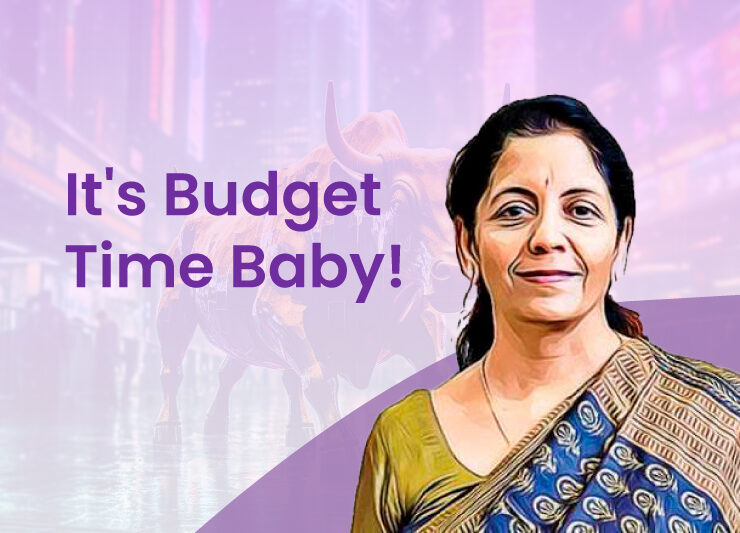A New Dawn in Indian Stock Markets: GIFT Nifty Shines as SGX Nifty Bids Adieu

Hey Readers!
It’s time to bid adieu to the SGX Nifty and say hello to the GIFT Nifty!
For more than 20 years, Indian investors had a neat trick up their sleeves to get a sense of how the stock market would kick off even before the opening bell. They would just peek at the Singapore stock exchange and figure out if the Indian market would start in the red or the green. But hold on folks!
Things have changed lately. In this blog, we’ll dive into how this trick started, why it’s no longer the bee’s knees, and what exciting opportunities have taken its place.
💸The Birth of the SGX Nifty
Back in 2000, the National Stock Exchange (NSE) in India sought to innovate and establish its presence in the market. It introduced a derivative product called the Nifty futures contract, which allowed investors to bet on the future direction of the Nifty 50 index. The NSE then formed a strategic partnership with the Singapore stock exchange (SGX) to create a similar index called the SGX Nifty.
This collaboration aimed to attract foreign investors to participate in India’s growth story by offering a futures contract that traded in Singapore, denominated in US dollars. This move provided ease of access, eliminated currency conversion hurdles, and attracted significant trading volumes.
💰The SGX Nifty’s Significance
The time difference between India and Singapore played a crucial role in SGX Nifty’s popularity as a leading indicator of Indian market sentiment. When the SGX Nifty started trading at 6:30 am in Singapore, it provided insights into market expectations before the Indian market opened at 9:00 am. This time advantage allowed investors to make more informed decisions.
As a result, billions of dollars worth of Nifty-linked futures contracts were traded in Singapore, contributing to the popularity of the SGX Nifty.
📊The Demise of the SGX Nifty
In 2018, disagreements arose between the NSE and SGX regarding the popularity of the SGX Nifty. The NSE felt that SGX Nifty’s success was diverting trading activity away from India, affecting the growth of the Indian futures market.
Additionally, SGX’s plans to introduce futures contracts for individual stocks further strained their relationship. The NSE decided to annul the data-sharing agreement with SGX, leading to legal disputes between the two exchanges.
🎁The Rise of GIFT City and the GIFT Nifty
Amidst this tussle, India had been building a new financial hub called the Gujarat International Finance Tec-City (GIFT City). The Indian government offered various incentives, including a 10-year tax holiday, to attract foreign businesses to this specialized zone. As part of this development, the International Financial Service Centre Authority (IFSCA) was established as a unified regulator to oversee financial services in GIFT City.
Recognizing the potential of GIFT City, the NSE proposed a collaboration with SGX. They suggested setting up operations in GIFT City, allowing foreign investors to trade the Nifty index in US dollars. Realizing the significance of the Indian market and the value of the SGX Nifty, both exchanges reached an agreement.
Consequently, on July 3rd, 2023, the SGX Nifty contracts migrated to GIFT City, undergoing a name change to GIFT Nifty. The NSE handles the trades, while SGX verifies and ensures compliance, allowing both exchanges to continue generating revenue.
🔎Looking Ahead
With the migration of the SGX Nifty contracts to GIFT City, investors no longer need to rely on Singapore as an indicator of Indian market sentiment. Instead, they can now turn to Gujarat to gauge the market’s outlook. This shift provides an opportunity for GIFT City to establish itself as a financial centre and attracts more foreign investors to trade the Nifty index.
As the morning bell rings at 6:30 am, GIFT City becomes the new focal point for investors seeking insights into the Indian stock market.
⛓️Sum UP!
The era of relying on the SGX Nifty as a leading indicator for Indian market sentiment has ended. The tussle between the NSE and SGX led to the migration of SGX Nifty contracts to GIFT City, opening a new chapter in India’s stock market landscape. This development presents an exciting opportunity for GIFT City to emerge as a global financial hub, offering foreign investors access to the Nifty index in US dollars.
As the world turns its attention to Gujarat, the morning bell at 6:30 am will now dictate market expectations and set the tone for the Indian stock market’s day ahead.
With the evolution of the Indian stock market and the rise of GIFT City, investors must adapt to the changing landscape and explore the new avenues available for participating in India’s growth story.
By staying informed and embracing these opportunities, investors can make better-informed decisions and potentially capitalize on the evolving dynamics of the Indian stock market.
Also Read: How Does Portfolio Rebalancing Optimize Returns and Manage Risk?








